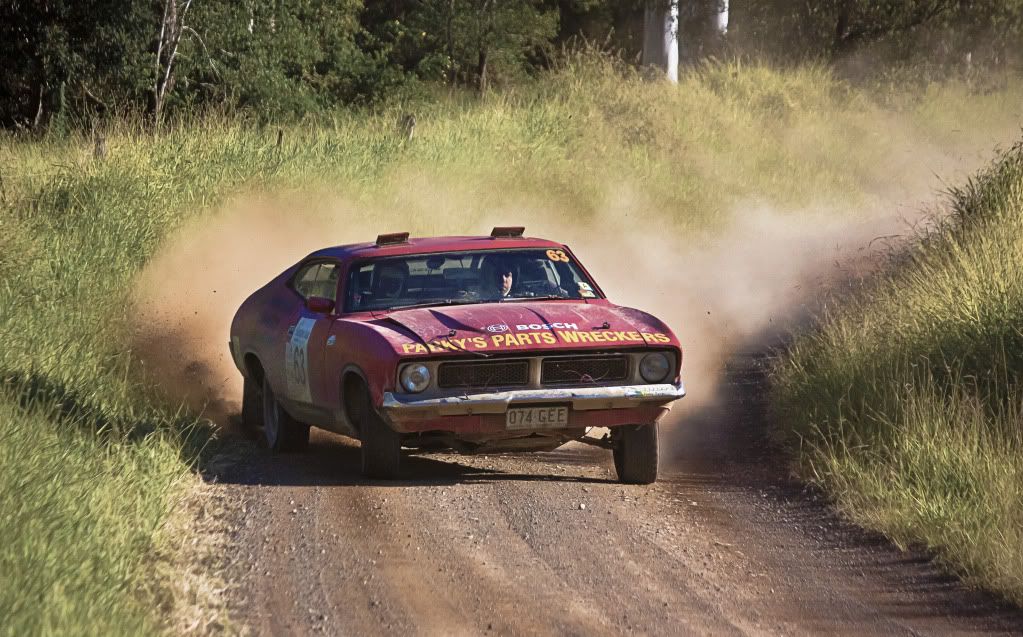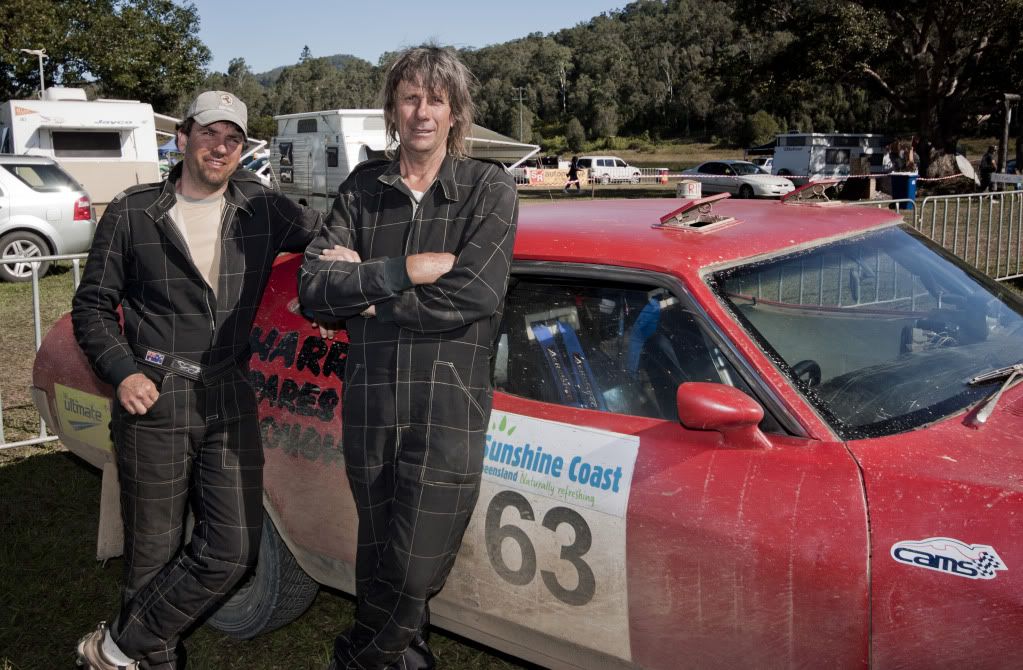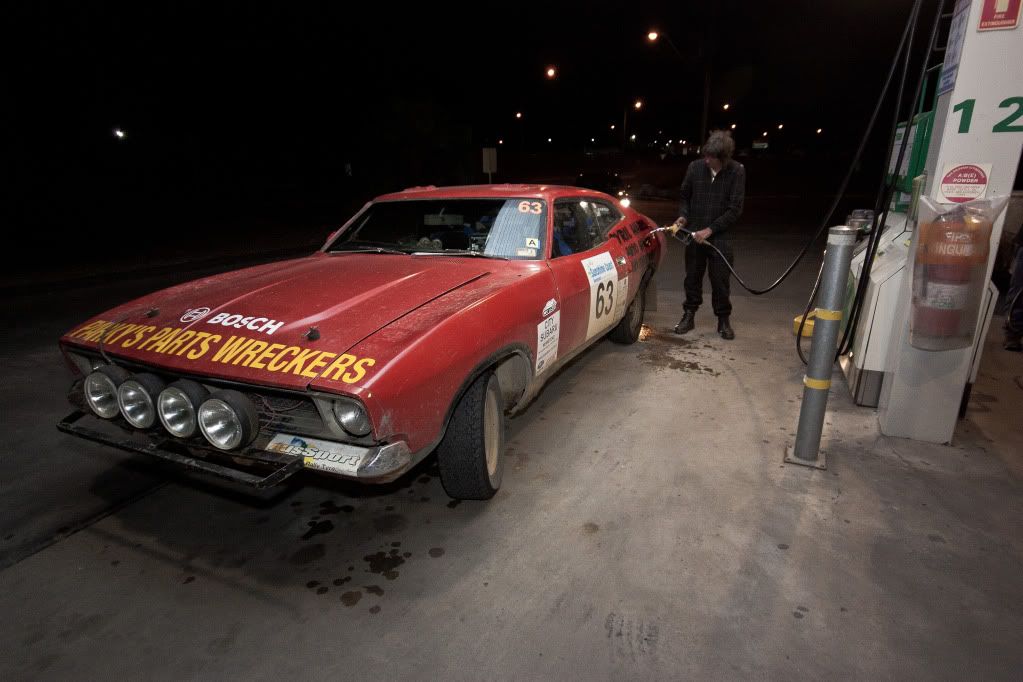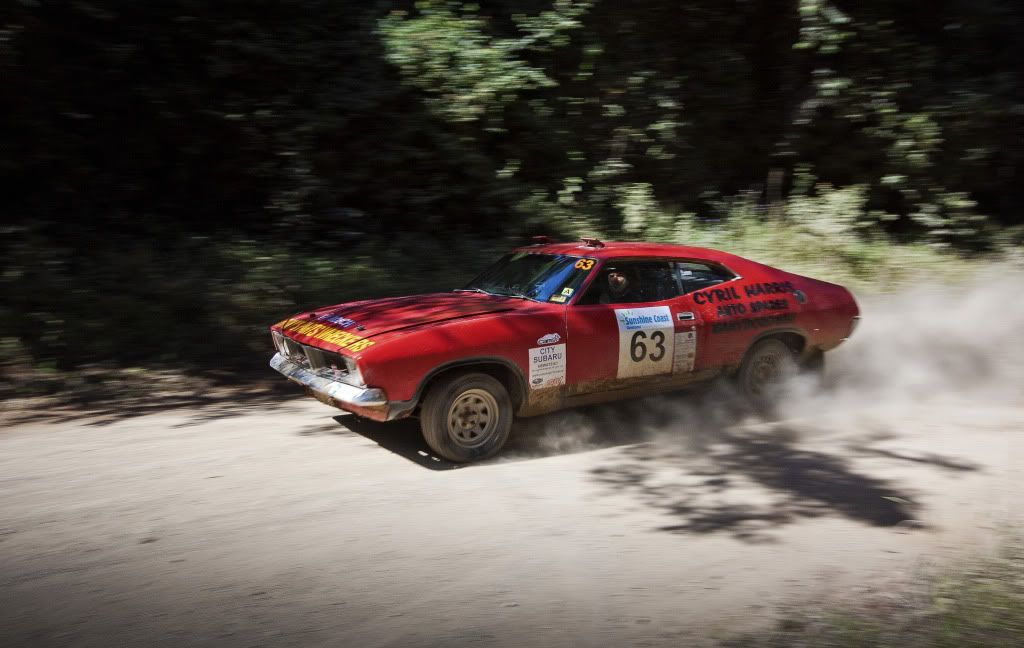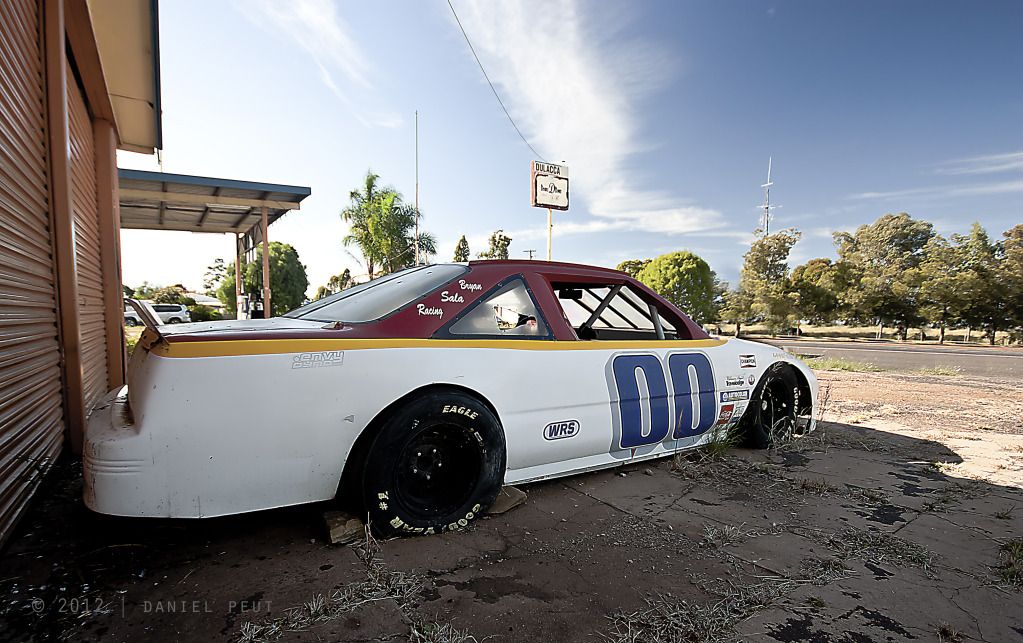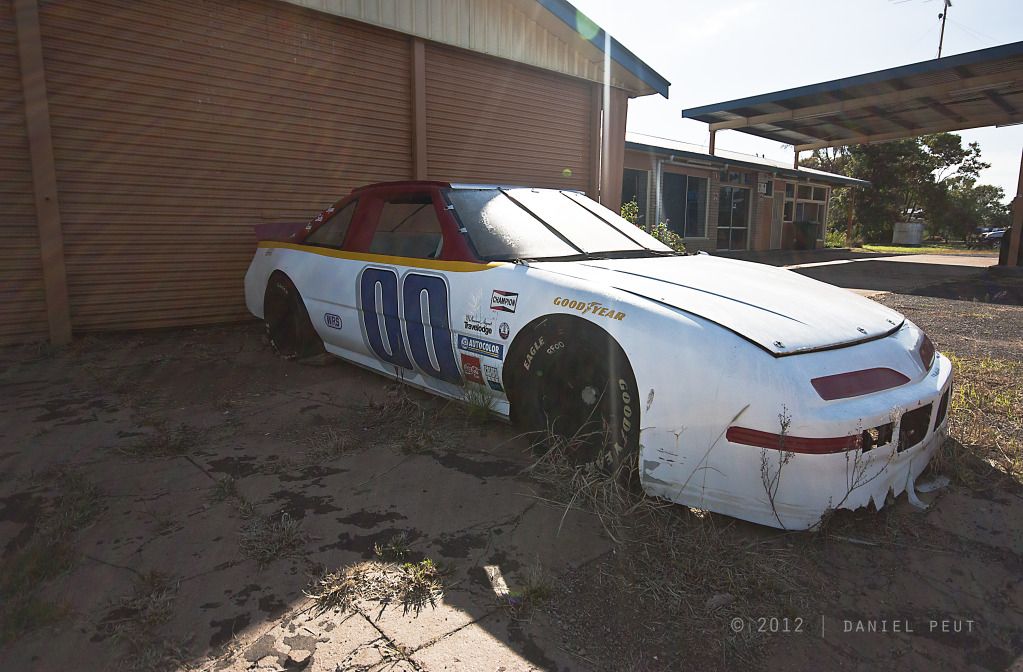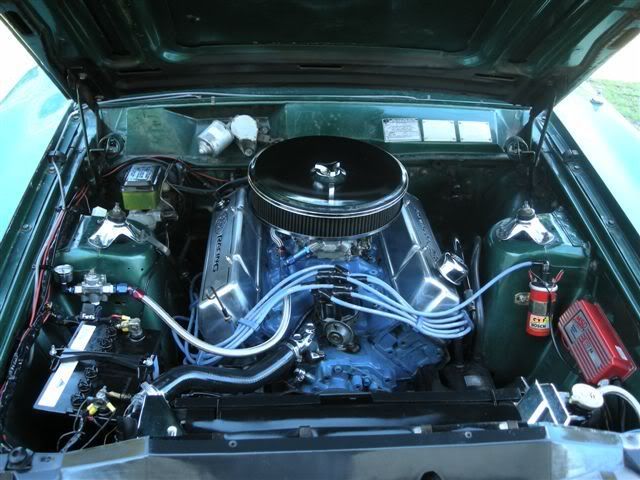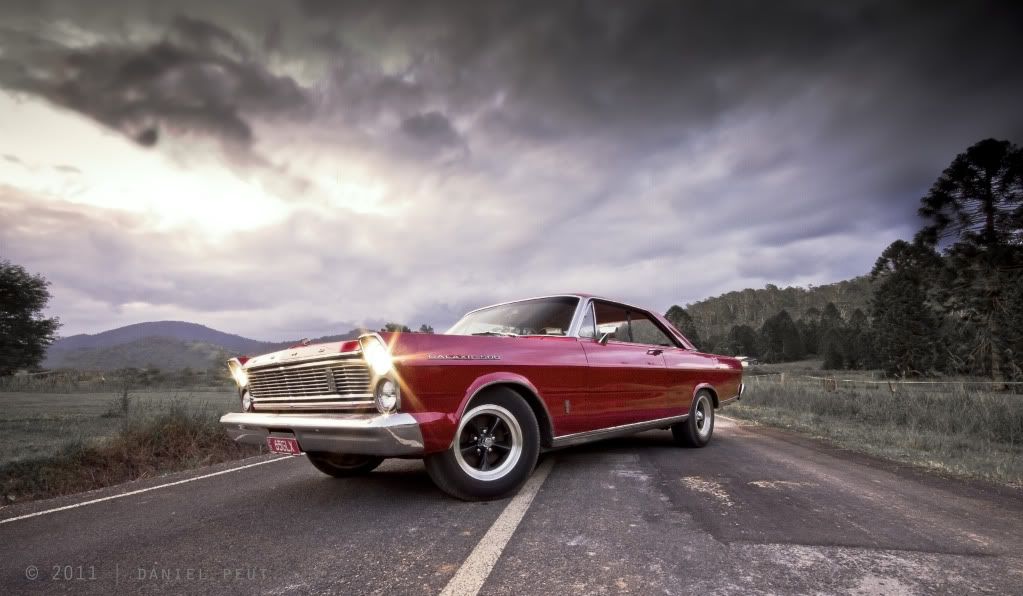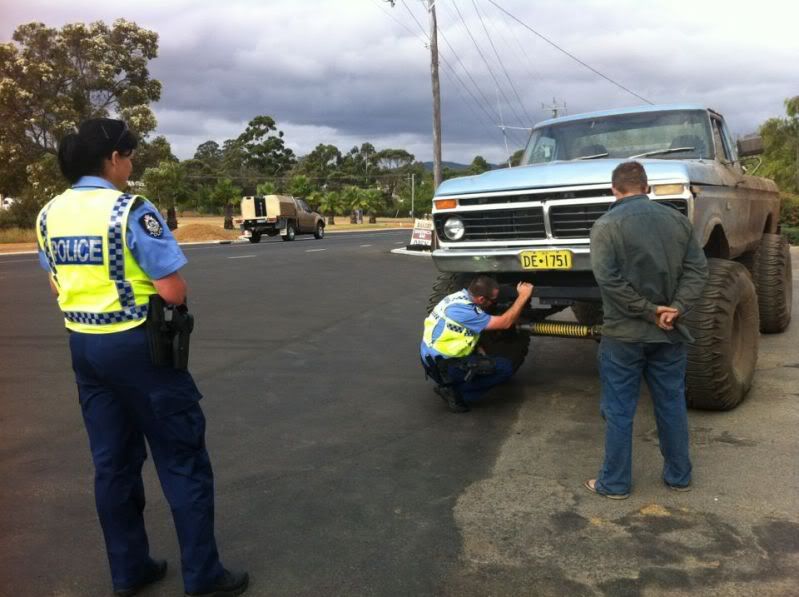Sunday, 7 October 2012
Detour
Facebook!
We've got a whole swag of published work from the last few months that will beuploaded shortly and I promise that I'll put up some original, never-before-seen content here very soon.
In the meantime, keep the shiny side up and between the ditches.
NH
Wednesday, 2 May 2012
Thursday Pitch - Airborne
Thursday, 19 April 2012
Desirable muscle car. One owner since '88. Only driven on weekends.
I finally met him last year - a genuine, old-school racer with a thousand stories to tell. I hung out, helped out as service crew at a couple of events, wrote an article that appeared in Gasoline magazine.
He was clearly both grateful and slightly amused that someone wanted to write a story about him, but gave me a lot of his time. Dan and I were very pleased with the finished article.
What I remember of my time hanging out with him is a lot of late-night hours sitting in a race seat on the way to Rockhampton, doing a lot of waiting and changing a lot of tyres. And that sick, sinking feeling when I realised that after 48 hours with only 3 hours sleep, I had sent him back out to a stage with loose wheelnuts. Fortunately, everyone survived that mishap.
For those who missed the article, here's a couple of excerpts and some of the photos:
Tuesday, 17 April 2012
Double Aught
Dan and I have often thought of going racing. We've both had plenty of road-racing experience in our formative years, but as we get older it seems the public
The only problem is the choice - As true car enthusiasts, prepared to give anything with wheels and an engine a go, we can't narrow the field. Forest rally? Drag racing? Motorcycle track days? Group Nc? Speedway?
Interviewing racers and spending time at race meets has only made things worse. When we saw this oval-track car outside an abandoned service station in Dulacca while driving to Roma to cover the Easter in the Country race meet, we were in love.
One day.
Saturday, 14 April 2012
Dashboard Diary - Deathproof
Gone, but not forgotten.
Thursday, 15 March 2012
In The Name of the Father - Australian Classic Car
Monday, 12 March 2012
Gathering Storm
I had a dream
I saw you driving
Down the road
In a gathering storm
Wind on the rise
Black crows flying
You out there
In the gathering storm
1965 Ford Galaxie
Nowhere Road
Sunshine Coast Hinterland
2011
Monday, 27 February 2012
Blue Lights
Monday, 20 February 2012
Dick Johnson's Tru Blu
It is interesting to note that the livery in the below photo, which I took at Lakeside last year, is actually a reproduction in itself, with Dick having sold the car after the 1981 to fund the purchase of his new racecar, the Red Roo XE, which later became the infamous GreensTuf Falcon.
Local Brisbane privateer, Alf Grant, raced the car for a while in a slightly modified, but no less recognisable, Tru Blu livery. Luckily, Dick had the foresight to buy the car back from Alf before it was turned into a sports sedan, which was the trend for race cars of that era.
Thursday, 16 February 2012
Dashboard Diary
Have just dispatched the next instalment, which is a trip down memory lane in to my automotive past. A dark, scary memory lane.
Friday, 3 February 2012
Triton
I know I'm a cafe racer tragic, but this is much more than a motorcycle. It's a Dresda Triton, built by Dave Degens. He wasn't the first to exploit the razor-sharp handling of the 'featherbed' Norton frame combined with the power of the 650cc Triumph twin, but his Triton hybrids set the standard on the track and at the Ace Cafe in the late 60's and continue to do so today.
With the passage of time, you'd have thought pulling apart valuable standard bikes to make monstrous creations with big alloy tanks and savage rearsets and open pipes would be out of fashion. Not so - Tritons are just as relevant today.
The man himself is even still building them, tuning them and making custom parts for them. Check it out.
The point of this brief history lesson?
They've been making modern Triumphs for many years now. They're everywhere you look - fat Rocket IIIs, bug eyed Street Triples, old school Thruxton Bonnevilles. Wreckers would surely be bulging with Triumphs that have climbed gum trees or bounced off taxis.
UK Bike magazine rated the Triumph powertrain in their top 5 engines of all time. It's pretty too.
Last year, the re-established Norton Motorcycles started manufacturing new Commandos from an industrial unit in the middle of the Donington Park race complex in Derbyshire, UK.
They're beautiful, but terrifyingly expensive. They boast capable chassis technology including big Ohlins forks and big Brembo brakes. The motors are a clean-sheet design that's been hastily tested and put in to production. Without an established dealer network, bikes outside the UK are going to have trouble with warranty claims.
See where I'm going with this?
Thursday, 2 February 2012
Teaser
Tuesday, 31 January 2012
The Bodger's Guide to Spanners
The adoption of a set of spanners over clumsily-wielded pliers is the sign of graduation from green amateur to seasoned bodger, prepared for anything.
Tools maketh the man. And sometimes a mess. Admire the shiny racks of Snap-On lovelies in the tool shop. These are not for you.
You'll most likely have a motley assortment of bent and rusty (but faithful nonetheless) Sidchromes that you found in the shed of a house you used to rent. The sizes will mostly be worn off or rusted in to oblivion, but given they were wrapped in a 1948 copy of Autocar, the smart money is on "nothing useful". These will be augmented by most of a $10 set of metrics you bought once, seduced by the shiny metal and the mysterious CHROME VANADIUM stampings.
Let's consider classification for a moment. Nominally, there are three types of spanners. The first is Whitworth, an ancient British standard of measurement, the distance across the 'flats' of the spanner based on the size of the oil leak left under a Brough Superior motorcycle in an hour.
Imperial is slightly less complex. The sizes of these spanners are measured in fractions of inches. Inches are what were used to measure small distances before the invention of Japanese cars.
Finally, we have metric spanners. Metric spanners are sorted by the amount of millimetres between the flats of the spanner before you used it to undo an imperial bolt. Never mind - the answer is nearly always 13mm.
Ah, the "Magic Thirteen".
A confession: I was not always destined to be a bodger. I once owned a full set of vintage Sidchromes in metric and imperial and prided myself on having the right spanner, socket and driver for every job.
One day, a stranger turned up to remove an engine I'd sold him from a doomed Fairlane. We were chatting away, merrily disconnecting bits and bobs when I said "Damn. Can't see the 1/2 inch spanner."
The stranger extended a shiny tool and said "This will do. Magic Thirteen." I looked askance. A metric spanner? On a gen-u-ine Made-In-The-USA half inch bolt?
I gingerly applied it to the unsuspecting fastener. It fitted snugly. I applied pressure, apprehensive, waiting for the ghost of Smokey Yunick to strike me down. The bolt gave and wound out without fuss. With a metric spanner.
The Magic Thirteen. It was a revelation.
Tuesday, 10 January 2012
The Bodger's Guide to Oil
Monday, 9 January 2012
Going Fast

When we automotive types browse the world wide web, we often come across a stack of meaningless and/or obscure claims to fame. One guy might claim he has the fastest manual Commodore in South Australia, and another might say they own the fastest purple-and-orange-striped-non-
All credible claims, I’m sure.
But how often do you come across a legitimately impressive claim? I was watching the telly late one night and came across a TV show about salt lake racing, Bonneville in particular. They were following the progress of a lady by the name of Leslie Porterfield, who had entered herself in the over 1000cc Production motorcycle class.
Leslie is no stranger to salt lake racing, having competed in numerous Bonneville Speed Week events, but this time she was determined to go hard or go home, preferably in once piece.
And go hard she did.
During the closing stages of the event, she rode her unfaired, but otherwise stock standard Suzuki Hayabusa to 209MPH (336KPH), backing it up for a second time to set the class record. Not only did that earn her a spot in the Speed Week record books, it also earned her the accolade of being the first woman on a conventional motorcycle to enter the Bonneville 200MPH club.
Subsequent attempts at Speed Week has yielded her two more noteworthy accolades, firstly setting the world record as the fastest woman on any motorcycle at 232MPH (373KPH) and secondly, the Top Speed of the Meet award (man or woman) at 240MPH (386KPH). Needless to say, she isn’t scared to twist the throttle or to push the limits.
Being the fastest person at a Wednesday night Test and Tune is one thing, but being the fastest person in the world is something that requires some serious dedication.
I tip my hat to you Leslie, I really do.
Friday, 6 January 2012
The Bodger's Guide
Immaculately suited in monogrammed white overalls and gloves, I enter the garage to find the car parked on a 4-post hoist. It's clean, inside and out, the bonnet is up and the engine is gleaming. I lift the hoist, extend my right hand and pick up a Snap-On 7/8th spanner out of the second drawer of the tool chest.
Stepping under the car, I admire the paint on the sump for a moment before undoing the plug and letting the clean-but-4999-kilometre-old oil drain in to a funnel on a stand. I then spin off the oil filter, which comes away easily with but a few drops in to a second drain pan. Someone passes me a cup of tea and a saucer with a biscuit while I wait for the sump to drain.
Tea finished, I dispose of the oil in an enviromentally friendly fashion. I take a new copper washer from a drawer, a new sump plug from an adjacent drawer and wind them back in. The final tighten is then done with a torque wrench - 30ft/lb. With some thinners on a rag, I wipe the face of the oil filter pad. The seal on the fresh oil filter is lubricated with a few drops of fresh oil and spun on firmly.
I safely lower the car to the ground and select a bottle of 20W50 Penrite from the rack. A spotless, white funnel is used to empty 4.5 litres exactly in to the engine. I replace the filler cap and shut the bonnet. Another cup of tea appears. I fill out the logbook as the tea cools and admire my handywork.
Wait...
In here, nothing ever happens like that. We adhere to strict standards - do your best, silicon the rest. It would be wonderful to have racks of shiny tools, but I'm yet to find a task worth doing that can't be completed with an angle grinder, a shifting spanner and a can of brake cleaner.
Anyone can write a Haynes manual dream sequence involving use of the Ford Special Tool #3490 (Puller). The rest of us just want to know how to get the job done.
For us, there will be The Bodger's Guide. Stay tuned.
Thursday, 5 January 2012
Nice Arse
More great shots from the DJR workshop - I think Dan is hoping one day the team will be packing the truck to leave for a round and throw him in by accident.
The top one is Dick Johnson's Fox-body Mustang from the '85-'86 Touring Car Championship. The Group A car was an American body, built in Germany and raced to no great effect in Australia. Best forgotten, apart from Dick's classic comment that "It wouldn't pull a sailor off your sister"
The Falcon is an AU XR8 that ran in the 2001 V8 Supercar series, driven by Steven Johnson. Not sure if it won much either.
Still, a great looking pair of race cars.
Wednesday, 4 January 2012
Mr Reliable
A friend just told me that this beautiful Norton Commando is an unsuitable mount because it may be prone to breaking down. The comment came from a man who owns two Alfa Romeos, so one would presume he's familiar with the shame of standing next to a stricken vehicle whilst those who chose more wisely swerve around you.
But since when has mundane, depressing reliability been such a virtue? If we're all striving for turn-key, fill-up, set-and-forget operation from our vehicles, why isn't the 2002 Toyota Camry the world's most desirable car?
People who ride or drive old stuff are pioneers and adventurers by nature. No one would remember Livingstone or Stanley if they journeyed to the heart of the Congo in air-conditioned comfort behind the wheel of a beige sedan. Manfully (or womanfully?) tackling adversity armed with nothing more than a shifting spanner and a can-do attitude develops our character. And often an odd limp.
The zen of breakdowns is the topic of a short column that will hopefully appear in print very shortly, accompanied by an excellent photo Dan took. We'll keep you posted.


